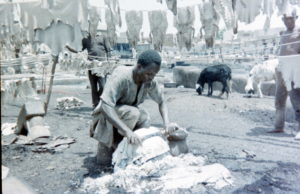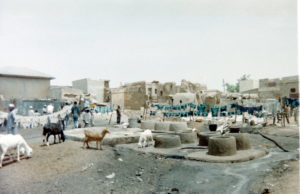POSTED ON
Events, dear boy, events
We have already spoken about how the SLTC conference on 28th April in Northampton looking interesting and the Textile conference (now postponed to October) but every year at Hong Kong the BLC along with the APLF have been running an afternoon seminar. The agenda this year looks particularly good. It is to be held on March 27th and the price is around $300 with extra discounts for alumni and students. I have produced the whole list as it shows on the BLC website.
PUMA’s Environmental Profit & Loss – Dr Reiner Hengstmann, Puma
Measuring environmental impact during the life cycle of footwear production
Sustainable Chemical Management– Dr Dietrich Tegtmeyer, Lanxess AG
Chemicals at the heart of sustainable leather manufacturing
The World Footwear Market – Perspectives for Entrepreneurs –Peter Mangione, Global Footwear Partnerships
How global and local drivers impact on footwear markets
Reducing Leather Waste – Christopher Gaysse/Bertrand Cronert, Lectra
Reducing manufacturing costs through optimisation of cutting efficiencies and reduction of material waste
Sustainability – IWAY – The IKEA Way –Lin Wang/Paulo Brenna, IKEA
Discussion of the IKEA code of conduct for purchasing, including environmental requirements
US Product Safety & Legislation– Matt Priest, Footwear Distributors & Retailers of America (FDRA)
The challenges of US legislative drivers; California Proposition 65, CPSIA and State chemical compliance regulations
Solar Power in Leather Making – Carsten Aschoff, Aschoff Solar GmbH
Opportunity to reduce your carbon footprint with solar power
Biodegradability including Life Cycle – Dr Victoria Addy, BLC Leather Technology Centre Limited
Towards sustainability in the leather supply chain through an improved understanding of biodegradability
The event is organised by BLC Leather Technology Centre Ltd and APLF Ltd, and sponsored by Lanxess Chemicals, Lectra and Leather International.
One always wishes that these events could be recorded so one could listen later to podcasts and the like. The University is testing lecture capture and hopefully that will lead to wider availability and accessibility over time. Even having one or two people on Twitter during a lecture – using the same hash tag – can be really useful. SATRA did it for a while to great effect. These meetings are important as in environmental matters getting your facts right and your definitions correct is clearly very important. The recent video by Stella McCartney where she condemns leather based on a series of error and misrepresentations of the facts is typical. The LeatherNaturally!response was quick and clear: http://bit.ly/wzE6I3
Good science is the foundation of sound marketing communications in the leather industry. In the environmental area “greenwash” is all too common. Defining biodegradability is one such area. Are we talking about 30 days, 90 days, 3 years or 100 years or just saying leather is biodegradable because the skin came from an animal?
Mike Redwood
29th February 2012
POSTED ON
Kano in the news

It is a little over twenty five years since I first went to Nigeria to buy sheepskins for Pittards. These were hairsheep; not as good and consistent for Pittards premium gloving but with careful management they were a big part of the Pittards input in those days. The trip was memorable in a number of ways.
It did not start too well as BA managed to misplace my luggage so meetings with suppliers, tanners and banks were done in rather appalling clothing that was all to be found late at night in Kano. Further interest was added for me as in a previous employment when a Director of the Booth Group, for whom I managed Turney Brothers, I discovered that Booths had been a joint owner and founder of Great Northern Tannery when it was set up in about 1961 – so says the Nigerian documentation but I thought it was 20 years earlier. I think the other partner was Colomer. Certainly my secretary at Turneys in Nottingham, Becky Lieber, who I shared with Paddy O’Flynn of Booth Overseas, was still buying machine parts and chemicals to ship to them.

Kano then was an amazing place. It has this two tier leather industry with a big historic craft tanning sector processing sheep, goat and some reptiles using a vegetable tanning process including a bran drenching. Alongside are a number of fully industrial plants which offer the opportunity to develop a lot of employment in light industry by moving onto the manufacture of footwear and other leather products. After many years of going nowhere Ethiopia is now showing the way forward and it is good to see my old company Pittards at the forefront. They did well out of Ethiopia for many decades and it is good to see something being given back, and working to mutual advantage. As well as giving employment light industry helps to reduce corruption which is all too easy when raw materials such as oil or diamonds are exported. Current issues in the Tanzanian leather industry look to be a typical example where tanners cannot get access to raw and where dealers keep exporting raw by using part of their profits to bribe government officials.
Another thing that surprised me on my first visit was to learn that this was in part an Islamic society and some of the traders we met were taking us around in Mercedes with pink curtains, to huge houses with enormous satellite dishes from which they could receive Saudi TV. Nevertheless Kano was quite a forward city and it seems that attempts to enforce Sharia law have not gone down well. So often the leather industry finds itself having to function in and around difficult political situations and terrorism. Let us hope that the leather industry can play a small part in helping Kano into the future.
Corium Club Dinner
This year’s Corium Club Dinner will be held at the Thai Emerald Restaurant in Northampton on Friday 9th March. Check out the Facebook page for the ICLT for details.